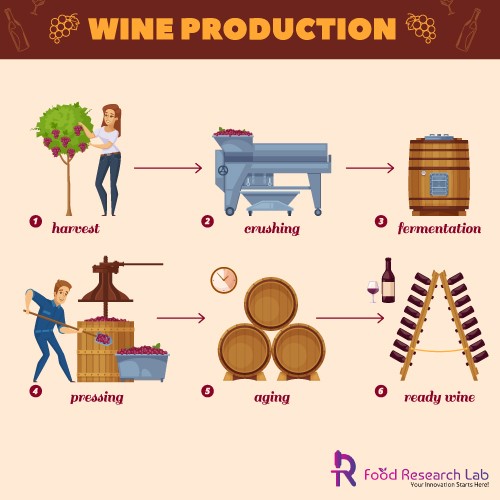
Steps in Wine Making Process
Harvesting, sometimes known as plucking, is the first step in the winemaking process. There would be no wine without fruit, and no fruit other than grapes can reliably produce enough sugar to yield enough alcohol to retain the ensuing beverage, nor do other fruits have the necessary acids, esters, and tannins to consistently produce natural, stable wine.
The next step in the winemaking process is customarily to crush complete clusters of fresh ripe grapes. The time-honored tradition of stomping or trodding the grapes into what is generally referred to as must is now carried out by machine crushers.
Fermentation usually lasts until all of the sugar has been converted to alcohol and a dry wine has been formed. Fermentation time might range from ten days to a month or longer. Because of the overall sugar content of the must, the resulting level of alcohol in a wine varies from one location to the next. In mild regions, a blood alcohol level of 10% is regarded normal, but in warmer climates, a blood alcohol level of 15% is considered normal. When the fermentation process stops before all of the sugar has been converted to alcohol, sweet wine is created. The winemaker usually makes this decision consciously and intentionally.
Filtration can be accomplished using a variety of methods, ranging from a coarse filter that captures just big particulates to a sterile filter pad that removes all life from the wine. Fining is the process of adding chemicals to a wine in order to clarify it.
The maturing and bottling of wine is the final step in the wine making process.






